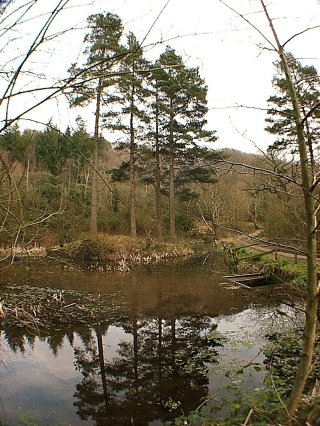Kingfisher Pond
 |
|
Kingfishers can often be seen visiting this pond and this has given it
its name. Created as part of the Wetlands Project
in 1991/2, Kingfisher Pond is a small but rich wetland habitat
supporting a whole variety of freshwater pond life. During early spring, thousands of toads and frogs can be seen during the hours of darkness as they congregate in the water in order to mate. Summer months see many species of dragonfly and damselfly emerge from their underwater larval stage and take to the air. A whole host of other invertebrate species living in the clean unpolluted water are found by pupils as they pond dip during organised educational visits. Species which are found include mayfly larvae, Great Diving Beetles and their larvae, water fleas, frogs, toads, newts and their tadpoles, water lice, pond skaters, water measurers and many others. Pond images can be found here. Water flows into Kingfisher pond from the stream, which in turn is fed by Monument pond at the north of the reserve. The water leaves Kingfisher pond over a specially constructed silt trap. This silt reducing measure was put in place before the construction of the new Leat, so it is now of less importance in protecting wetland habitats further downstream. The silt trap is designed so that it contrls the height of the pond. Having left the silt trap, the water flows downstream through a marshland area before entering the main lake. |
Visit the Woodland Education Centre